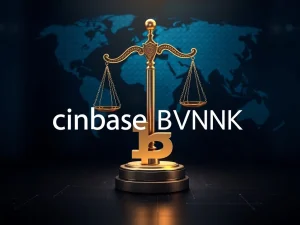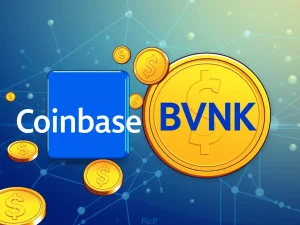Unlock Passive Income: A Beginner’s Guide to Staking Solana (SOL) in 2025

Are you looking for smart ways to grow your cryptocurrency holdings in 2025? Earning passive income in the crypto world is becoming increasingly popular, and staking Solana (SOL) stands out as a fantastic opportunity. If you’re new to staking or just curious about how to stake Solana, you’ve come to the right place. This comprehensive guide will walk you through each step, making the process simple and understandable, even if you’re a complete beginner.
Understanding the Power of Solana Staking
Solana staking is more than just holding your SOL tokens; it’s about putting them to work and earning rewards while contributing to the network’s security and efficiency. Think of it as earning interest on your crypto holdings, but with added benefits. Let’s break down what makes SOL staking so appealing:
- Earn Staking Rewards: By staking your SOL, you become eligible for staking rewards. These rewards are a percentage of your staked amount, influenced by factors like Solana’s inflation rate, the total staked SOL, and your staking duration. It’s a fantastic way to grow your SOL holdings over time.
- Participate in Governance: Staking grants you a voice in the Solana network’s governance. You can vote on proposals that shape the future of Solana, ensuring that your investment also gives you a say in its direction.
- Boost Network Security: Your staked SOL plays a crucial role in enhancing the security and stability of the Solana network. By participating in staking, you’re directly contributing to the health and longevity of the Solana ecosystem, making it a more robust investment environment for everyone.
Rewards from staking Solana are typically distributed every two days, known as an epoch. When you stake, you’re essentially delegating your SOL to a validator, a key player in the Solana network.
Solana Validators and Delegators: A Quick Explanation
Imagine validators as the hardworking engines of the Solana network. They are responsible for:
- Processing transactions
- Producing new blocks
- Voting on network proposals
As a staker, you become a delegator by entrusting your SOL to a validator. Your role is to choose validators who are reputable and committed to maintaining the network’s safety and integrity. Why is this important? Because validators vote on your behalf, and their votes are weighted by the amount of stake they hold. Choosing wisely ensures your interests are represented.
Did you know? Solana’s impressive speed is a major draw. It boasts an average of 1,128 transactions per second (TPS), with the potential to reach a staggering 65,000 TPS!
Getting Started with Solana Staking: What Beginners Need to Know
Before you dive into how to stake Solana, let’s cover some essential aspects to ensure you’re well-prepared.
Understanding Your Staking Options: Liquid vs. Native Staking
When it comes to staking, you have two primary methods, each offering different levels of flexibility and control over your SOL:
| Staking Method | Liquidity | Complexity | Best For |
|---|---|---|---|
| Liquid Staking | High – Retain access to liquidity through Liquid Staking Tokens (LSTs) | Slightly more complex due to DeFi integration | Users who want to earn rewards and participate in DeFi |
| Native Staking | Low – SOL is locked during staking | Beginner-friendly and straightforward | Beginners focused solely on staking rewards and network participation |
Liquid staking gives you the best of both worlds: earn staking rewards while keeping your assets liquid. You receive Liquid Staking Tokens (LSTs) representing your staked SOL, which you can use in Solana’s DeFi ecosystem. Native staking, the traditional method, locks your SOL to earn rewards and participate in governance, but you can’t use these funds until you unstake.
Solana Staking and Taxes in 2025
It’s crucial to be aware of the tax implications of Solana staking, especially in regions like the United States. Here’s a simplified overview:
- Income Tax: You may owe income tax on the value of SOL rewards when you gain control over them and when you unstake your initial SOL.
- Capital Gains Tax: When you sell, trade, or convert your received SOL rewards, capital gains tax may apply.
Tax laws can be intricate and vary by jurisdiction, so consulting with a tax professional is always recommended for personalized advice.
Your Step-by-Step Solana Staking Guide for 2025
Ready to begin? Here’s your detailed Solana staking guide using Phantom Wallet, a popular and user-friendly option:
Step 1: Choose and Set Up Your Solana Wallet
First, you’ll need a Solana-compatible wallet. Phantom Wallet is a great choice due to its built-in staking features.
- Download Phantom Wallet: Visit the official Phantom Wallet website and download the wallet for your browser or device.
- Create a New Wallet: Launch Phantom and select “Create a new wallet.”
- Seed Phrase: Opt for “Create a seed phrase wallet” for enhanced security.
- Password and Recovery Phrase: Set a strong password and carefully write down your recovery seed phrase on paper. Store it securely offline. Confirm you’ve saved it and click “Continue.”
- Username: Create a username and click “Continue” to complete the wallet setup.
Step 2: Fund Your Phantom Wallet with SOL
To start SOL staking, you need SOL tokens in your Phantom Wallet. You can:
- Transfer SOL: Send SOL from another wallet to your Phantom Wallet address.
- Buy with Card: Use the “Buy” button in Phantom to purchase SOL directly with a debit or credit card through integrated partners like Robinhood or Topper.
Step 3: Initiate Staking
With SOL in your wallet, you’re ready to stake:
- Access Staking: In your token list, click on “Solana.” Then, select “Start earning SOL.”
- Choose Staking Method: Decide between “Liquid Staking” or “Native Staking.”
- Liquid Staking (via Jito): If you choose liquid staking, Phantom integrates with Jito. You’ll see the estimated APY and the amount of JitoSOL LSTs you’ll receive. Confirm if you wish to proceed. JitoSOL will then appear in your token list.
- Native Staking: For native staking, Phantom will present a list of validators, ranked by staked SOL and APY. Select a validator that aligns with your preferences.
- Delegate SOL: Enter the amount of SOL you want to stake and click “Stake.”
The network will then create your staking account. You’ll typically start earning rewards within a few days. Congratulations, you’re now successfully staking Solana!
Did you know? Validators who underperform or act maliciously face penalties called “slashing,” which reduces their rewards and, consequently, the rewards of their delegators. This system encourages validators to act responsibly.
Unstaking Your Solana: When and How
There might be times when you need to unstake your SOL, whether you’ve chosen liquid or native staking. Common reasons include:
- Converting SOL: To trade or sell your SOL, unstaking is necessary.
- Switching Networks: If you want to explore staking on another blockchain, you’ll need to unstake your SOL to transfer it.
- Validator Issues: If your validator behaves poorly, unstaking and choosing a new one is a prudent move.
Unstaking Natively Staked SOL
- Go to “Your Stake”: In your token list, click on “Solana,” then select “Your stake.”
- Unstake: Choose the validator you wish to unstake from and click “Unstake.”
- Withdraw: After unstaking, select “Withdraw Stake” to move the funds back to your wallet. The validator status will change to “Inactive.”
Unstaking Liquid Staking Tokens (LSTs)
- Select LST: Find your LSTs (like JitoSOL) in your token list and select them.
- Unstake Option: Click “More” and then “Unstake.” If using Jito, you’ll be redirected to their platform.
- Choose Unstaking Type (Jito Example):
- Immediate Unstaking: Faster but incurs a small fee. You can adjust fees for priority and slippage.
- Delayed Unstaking: Takes longer (day to week depending on network) but has lower fees and no slippage concerns.
- Unstake SOL: Select your preferred option and click “Unstake SOL.” The funds will return to your wallet after processing.
Did you know? You can start staking Solana with as little as 0.01 SOL, making it exceptionally accessible compared to many other Proof-of-Stake networks.
Is Solana Wallet Staking a Safe Bet?
Staking Solana is generally considered a relatively safe way to engage with the crypto ecosystem. However, like all crypto activities, it’s important to be aware of potential risks:
- Market Volatility: The value of SOL, like all cryptocurrencies, can fluctuate significantly. Market downturns can impact the value of your staked assets.
- Validator Risks: While your initial investment is generally safe, validator misbehavior or downtime can lead to “slashing,” reducing your potential rewards.
- Cybersecurity Threats: Crypto networks are always targets for hacks and exploits. While Solana is robust, vulnerabilities can still emerge.
- Past Network Issues: Solana has experienced periods of network congestion and outages in the past. While not directly putting staked funds at risk, such events can be concerning and might be exploited by malicious actors.
In conclusion, while how to stake Solana offers an exciting opportunity to earn passive income and participate in a dynamic blockchain network, it’s crucial to approach it with an understanding of the inherent risks. Always assess your risk tolerance, conduct thorough research, and take necessary precautions to protect your investments.
Disclaimer: This article is for informational purposes only and does not constitute financial advice. Cryptocurrency investments are inherently risky. Always conduct your own research and seek advice from a qualified financial advisor before making any investment decisions.
#Blockchain #Cryptocurrencies #DeFi #Solana #Staking #How to







